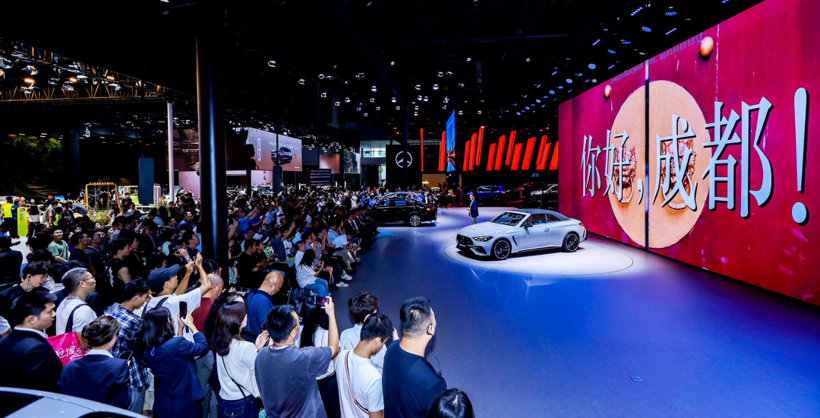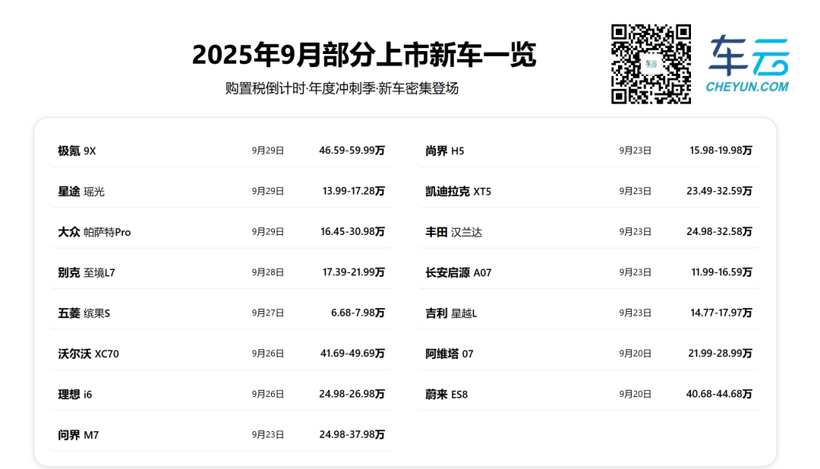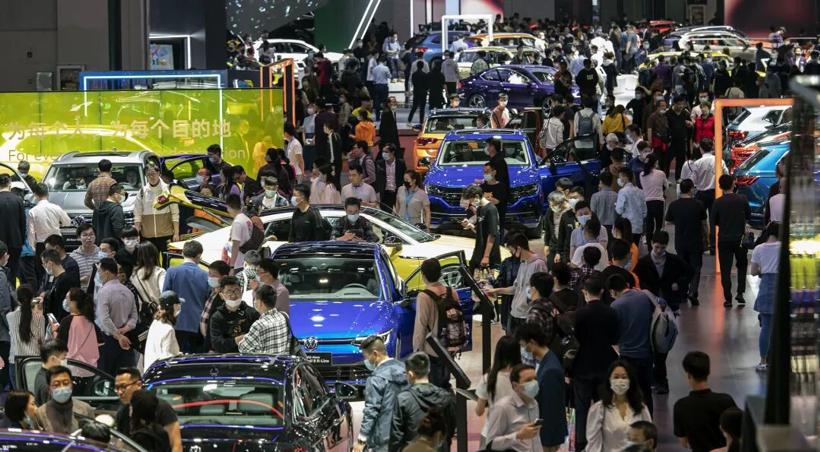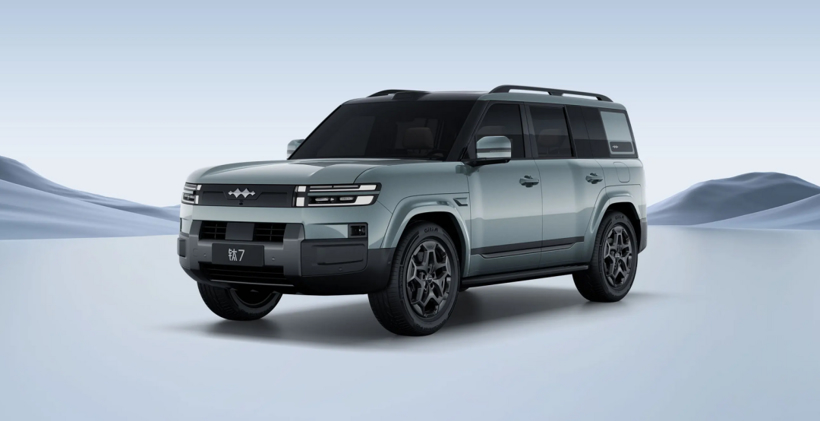Record Density of New Cars in September: Why Are Automakers Betting on the Final Quarter?
In September this year, the car market was unusually lively. Looking at the new car calendar for September, it seems like all major car manufacturers had coincidentally pinned their most important product launches to this month. Scrolling through social media, every few days there's a new car launch event from a brand, and flipping through automotive media updates, almost every week there's a headline announcing a "major launch."
In September, the launch of new cars is not a new phenomenon, but this year is particularly crazy: the Fangcheng Leopard Ti 7 launched in early September, and within 5 days of its launch, over 1,000 units were delivered; the Arcfox T1, positioned in the pure electric small car market, received over 26,000 reservations within 1 hour of its launch; the Xiangjie S9T, the first travel car with HarmonyOS, was launched, followed by the all-new Wenjie M7 and the highly anticipated Shangjie H5; the Audi E5 Sportback, Lynk & Co 10 EM-P, Denza N9, and Zeekr 9X have also been successively launched.

According to incomplete statisticsIn the entire month of September, there were more than 30 new fuel and new energy vehicles launched, and even the media commented that "there aren't enough automotive journalists."
Before the arrival of Q4, it seems that all major automakers heard the same starting gunshot, placing all their bets on this starting line. There are multiple reasons behind this, with the imminent expiration of policy windows being one aspect, and the relentless push of annual KPIs also not to be ignored. All automakers are caught in a race against time, visibly reflecting both the vibrancy and pressure of the Chinese automotive market.

01
Countdown: Last 100 Days of Purchase Tax Reduction
What makes September this year different is, first of all, a clear deadline.The policy of exempting the purchase tax for new energy vehicles will expire at the end of this year. Starting from January 1st next year, the tax will be reduced by half, with a maximum tax reduction of 15,000 yuan per vehicle, resulting in a decrease in the level of benefits.For a new energy vehicle priced at 300,000 yuan, the purchase tax exemption translates to a tangible discount of nearly 30,000 yuan. This amount is enough to prompt many hesitant consumers to immediately make a decision.
History always has a remarkable similarity. At the end of 2022, when the purchase tax reduction policy was first about to expire, the entire industry experienced a delivery surge. That experience taught all car companies that the policy window is a period of sales boom. And now, the same window has opened again, with only 100 days remaining.
For car manufacturers, it usually takes 1-2 months for a new car to transition from its launch to large-scale delivery, which involves a market cultivation period and a production ramp-up period. This means that if a new car is launched in September, deliveries begin in October, and there's a full sprint in November and December, allowing consumers to take delivery before the end of the year and enjoy the final purchase tax reductions. So why is the density of new cars in September this year far exceeding previous years? It's not necessarily because car manufacturers have become more diligent; rather, the countdown of policy deadlines has compressed all the new cars that might have been gradually released throughout Q4 into September, the last starting line. Every day delayed means one less day of sales window, and being a week late could result in selling thousands of units less.

It should be noted that the tax exemption policy for vehicle purchases is based on the invoice issuance date rather than the date of signing the purchase contract. This means that in order to enjoy the exemption from vehicle purchase tax, the date on the invoice or relevant valid documents must fall within the tax exemption period specified by the policy.
Therefore, placing an order before the end of the year is definitely not enough. You also need to leave enough time to complete the process, obtain the invoice, and enter the production schedule (usually marked by receiving the specific vehicle identification number). This is why both Li Auto and NIO have successively promised that if users are unable to enjoy the purchase tax reduction according to the current policy due to production scheduling reasons, the difference will be covered by them.

02
Golden September and Silver October: A Traditional Peak Season Not to Be Missed
In addition to these reasons, the traditional concept of the "Golden September and Silver October" continues to have an impact on this year's car market, indirectly driving car manufacturers to quickly release new models during this period. It can be said that the traditional concepts of "Golden March and Silver April" and "Golden September and Silver October" have long been deeply ingrained in the DNA of various industries in the Chinese consumer market, including the automotive industry. Whether it's buying a house or a car, or looking for a job and headhunting, people like to time these activities around these periods.
Every September, along with the upcoming Mid-Autumn Festival and National Day, consumers' willingness to purchase cars tends to see a concentrated release. The attention and buzz surrounding newly launched vehicles are at their peak during this time. By launching new models, manufacturers can leverage the holiday traffic and atmosphere to quickly establish market recognition, while consumers can take advantage of their time off to visit dealerships, test drive, and place orders. This strategy is often planned well in advance of the new car launch. This year, the overlap of the National Day and Mid-Autumn Festival holidays, creating an 8-day long super holiday, makes it even more tempting for car companies to capitalize on this golden opportunity.
From the information revealed by various car companies during the National Day Golden Week, it is evident that the holiday was indeed beneficial for foot traffic in supermarkets and 4S stores. Some car companies reported impressive sales figures and order performances in the first week of October, indicating that their strategies have achieved certain results.
03
Q4 Sprint: A Last-Ditch Effort for Annual KPIs
September is also an important month as it marks the end of the third quarter and serves as the starting line for the fourth quarter. For all car manufacturers, this is a critical time point, and whether the annual sales targets can be achieved depends on the performance in Q4.
Hongmeng Zhixing hopes to achieve capacity ramp-up by the end of the year through the launch of the Xiangjie S9T and a new product combination; BYD's subsidiary Fangchengbao has launched the Titanium 7, entering the household SUV market with a starting price of 179,800 yuan; even for BYD, which has already secured the sales champion position, it needs to consolidate its leading advantage by the end of the year. These goals carry the expectations of the capital market, the cost allocation of the supply chain, and the annual assessment of dealer rebate policies.

Launching new cars in September can provide a three-month sales window for Q4, making this timing just right. In the current saturated market with fierce competition, relying on old models makes it difficult to achieve breakthroughs; only new products can create new growth opportunities. This wave of automotive companies’ annual strategy is concentrated on using new products to boost Q4 and using Q4's performance to conclude the year. What is different this year is the countdown to the purchase tax, a strong stimulus, which has added to the influencing factors and turned September into an absolute window period that cannot be missed.
When policy milestones become the driving force behind industry-wide actions, market volatility and uncertainty also increase. In the past, a car model could be popular for three years, but now it needs to be updated every six months. Previously, new car launches could be planned at a leisurely pace, but now they must be timed precisely. The biggest challenge of this trend for car companies is the skyrocketing marketing costs. Brands are launching new cars, holding press conferences, and placing advertisements at this critical time, severely diluting consumer attention. Millions may be invested in a single press conference, but the impact can quickly be drowned out in the torrent of information.
At the same time, production capacity and the supply chain are also facing challenges. A September launch means stocking up must begin in August or September, which places extremely high demands on the responsiveness of the supply chain and capacity planning. The Fangcheng Leopard Ti7 will be delivered immediately upon launch, and the Xiangjie S9T has announced that deliveries will begin on September 21. This is a tough battle for the manufacturing system.
In this wave of new car launches, a deeper issue is differentiation. When too many new cars appear on the market simultaneously, how do you tell a different story? Every company is striving to find its own positioning because in this homogeneous competition, "I have it too" is no longer enough; it must be "only I have it." For ordinary consumers, choices have never been more abundant, but the pressure to make decisions has never been greater. With promotional campaigns overwhelming them, finding the product that truly suits them under time pressure has become a difficult task. The countdown on vehicle purchase tax acts like an invisible hourglass, and this sense of urgency may lead some to make not entirely rational choices in a rush.
When all car companies start in the same time frame, the game is no longer about who runs faster, but about who won't stumble in the sprint. The feast of new cars in September is still ongoing, and the intensive launch schedule tests the true product strength and supply chain resilience. Time will eventually reveal who the real long-distance runners are and who are just short-distance sprinters propelled by policies.
【Copyright and Disclaimer】The above information is collected and organized by PlastMatch. The copyright belongs to the original author. This article is reprinted for the purpose of providing more information, and it does not imply that PlastMatch endorses the views expressed in the article or guarantees its accuracy. If there are any errors in the source attribution or if your legitimate rights have been infringed, please contact us, and we will promptly correct or remove the content. If other media, websites, or individuals use the aforementioned content, they must clearly indicate the original source and origin of the work and assume legal responsibility on their own.
Most Popular
-

At Least 44 Dead in Century-Old Fire! Questioning Hong Kong's Hong Fu Garden: Why Has the Path to Fire Resistance Taken 15 Years Without Progress?
-

Satellite chemical's profits surge! can the 26.6 billion yuan high-end new materials project meet expectations? a review of progress on four major projects
-

Key Players: The 10 Most Critical Publicly Listed Companies in Solid-State Battery Raw Materials
-

Estun Turns Profitable in 2025 Half-Year Report, Industrial Robot Shipments Rank First Among Domestic Brands
-

Avatr Files for IPO on HKEX, Plans to Complete Listing in Q2 2026






